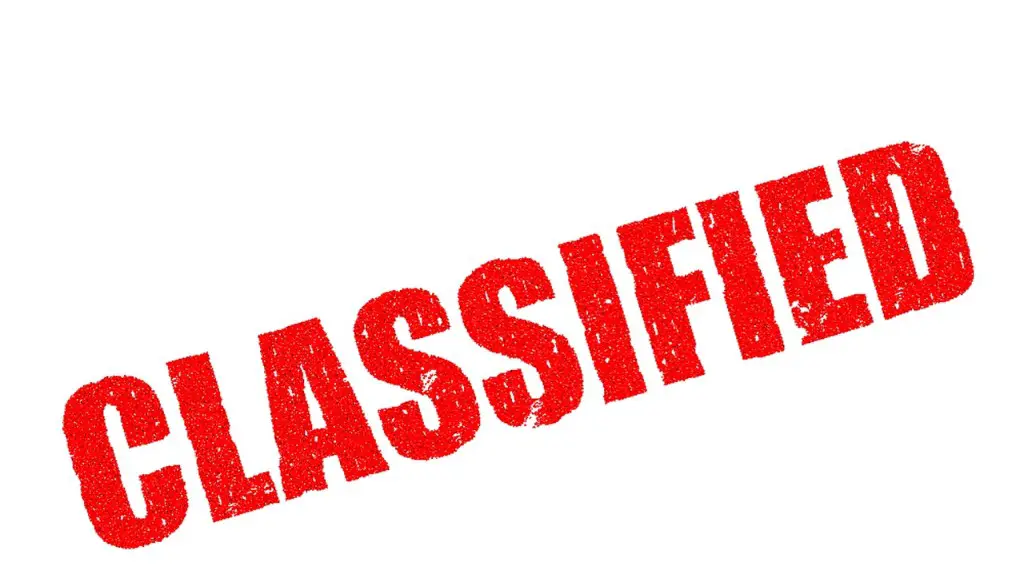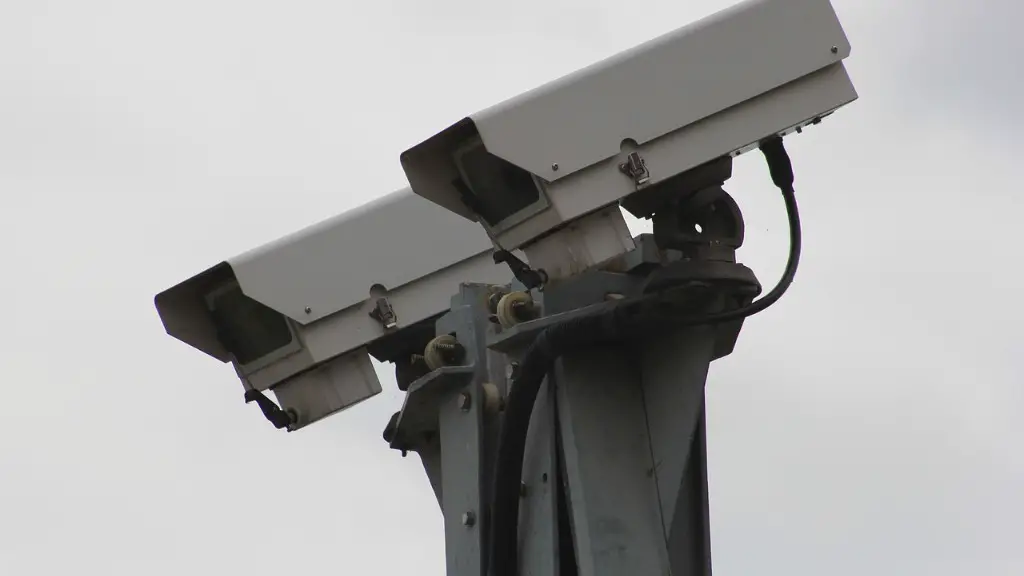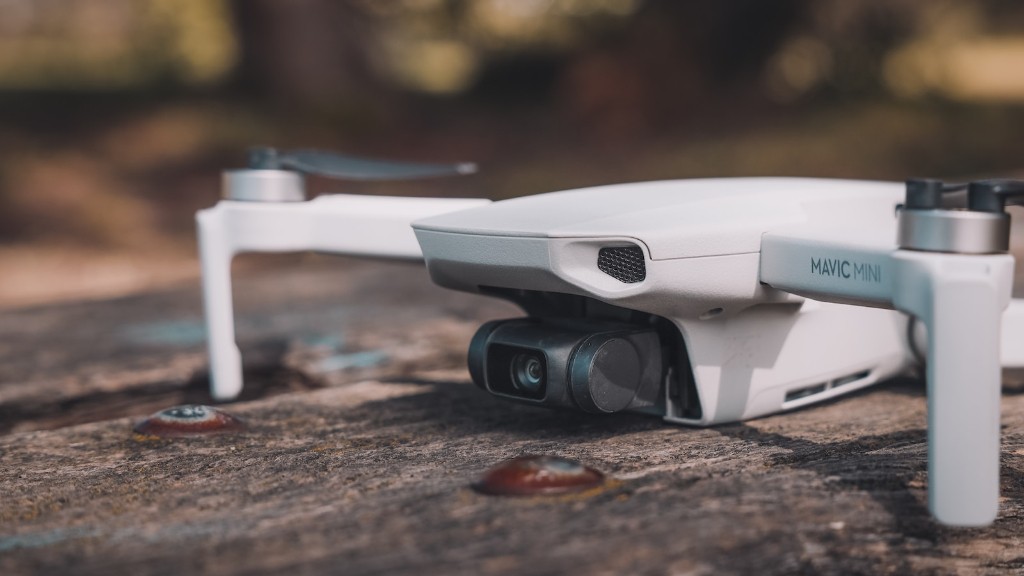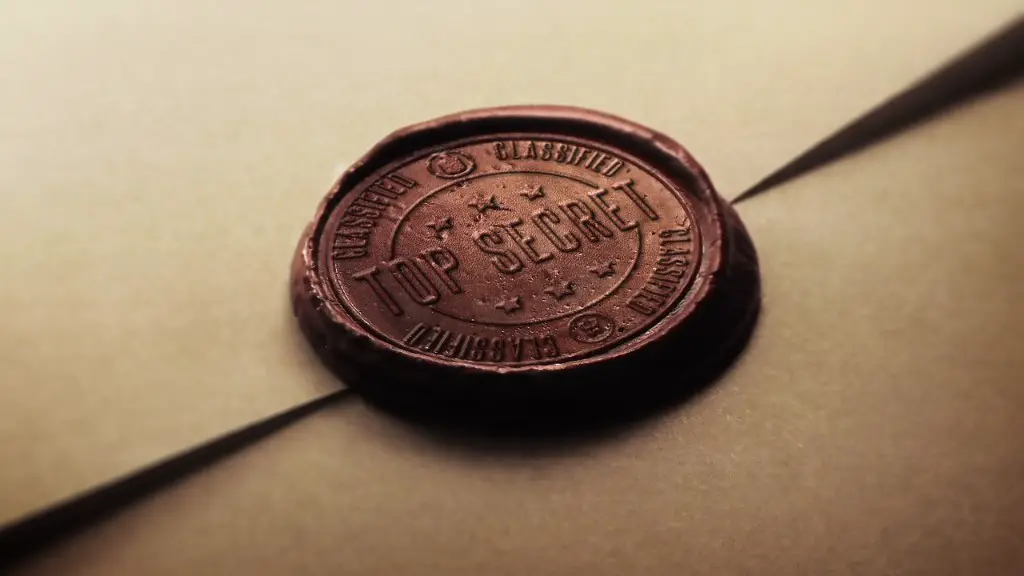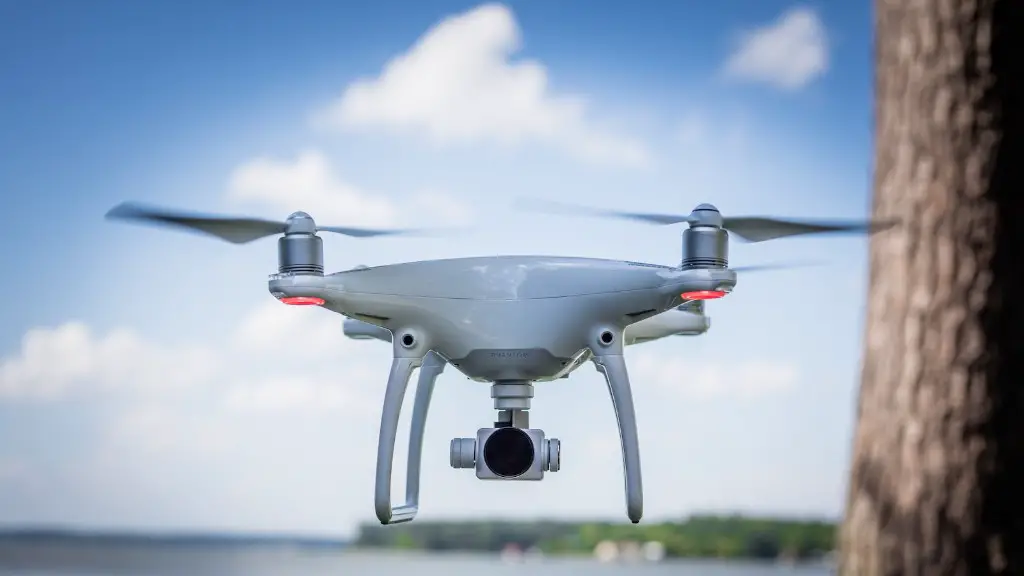What does a real CIA badge look like? If you’re a fan of spy movies, the iconic CIA badge is likely something you’ve seen in your favorite films, or admired up close. The CIA badge is one of the most recognized symbols of power in the US, and has been around since 1949 when the Central Intelligence Agency was first founded. It stands for the highest standards of patriotism and service and marks the dedication to prevent crime and protect the nation’s national security. But what exactly does this badge represent?
The design of the badge reflects the highly regarded, professional role of the intelligence agency. Representing more than a symbol of patriotism, the badge is a hallmark of power, honor, and integrity. It is made of solid metal and features a simple, five-point star with a central disc emblazoned with the phrase “Central Intelligence Agency” in white, with a small red banner tucked in the bottom pointing towards the center. The star is surrounded by a laurel wreath, depicting the agency’s integrity and commitment to excellence. The badge itself is approximately 2.75 inches in diameter, and weighs about an ounce. It is typically stored inside a small case and presents a glossy shine when collected.
The badge comes with an official certificate of authentication, and holders are expected to take specific steps to keep the badge secure. This includes keeping the certificate and official documents in a secure location and following specific protocol and rules while wearing the badge. As a rule of thumb, the badge should never be worn in a public setting unless taking part in an official mission.
The CIA badge is an important part of the agency’s culture and is held in the highest standards by members of the intelligence community. For members of the agency, the badge is an incredible honor and offers a sense of pride in the service provided to the nation. In addition, the badge is also a symbol of career accomplishment, as it marks the dedication to honour and excellence in the field.
The CIA badge stands for commitment and integrity and is a sign of true patriotism. Its design speaks to the trust and respect that a holder has earned from the intelligence community, and the deep level of commitment that they have made to the agency. Although films may often portray the CIA badge as a source of power, in reality it is a sign of service, pride, and courage in facing challenges on the nation’s behalf.
CIA Selection and Training Process
Becoming accepted into the CIA is no easy feat. All applicants must meet a set of strict criteria in order to be considered for membership. Aspiring members need to have a variety of skills and qualifications including education, relevant work experience, and specialized knowledge. Those who apply for a position must also pass a rigorous background investigation and psychological assessment. Having a college degree is also beneficial for many positions, though there are some which may require a graduate degree.
The CIA’s selection process is rigorous and can take months to complete. Candidates may be required to complete multiple interviews, physical examinations, and will be subjected to a security clearance process. If a candidate is accepted, they will begin their official training at the CIA. During this process, agents learn about protocols, mission strategies, and security protocols. They also receive in-depth training in foreign languages and undergo rigorous courses in espionage, surveillance, and communication.
After their initial training, agents may be assigned to their first mission. All missions must be approved by the CIA Director. Aspiring agents must keep in mind that this is an exciting and rewarding career, but it is also a lifestyle of commitment, dedication, and discipline.
Day-to-Day Responsibilities as a CIA Officer
The day-to-day responsibilities of a CIA officer vary greatly depending on the individual position. Generally, most involve researching political, economic, and security information from other countries. They may also be responsible for carrying out clandestine operations, collecting and analyzing foreign intelligence, and developing strategies to protect the country.
Agents are also responsible for managing resources and conducting counterterrorism operations. Those working in analysis positions may prepare reports on countries and activities, as well as analyze intelligence to detect threats and provide recommendations for policy decisions. On the other hand, those working in specialized operations may be responsible for carrying out secret missions and undercover operations.
Aside from their primary responsibilities, most agents are expected to keep abreast of worldwide intelligence reports, attend meetings and conferences, and provide briefings. CIA officers do not work in the same office each day. Instead, agents often travel the world, gathering and analyzing intelligence in the field.
Roles and Salaries of a CIA Agent
The roles and salaries of a CIA agent are not strictly defined. The qualifications and responsibilities of individual CIA agents typically depend on the roles they are assigned to. For instance, those working in high-level positions may receive increased salaries. In addition, agents may receive performance bonuses or additional compensation for their efforts in the field. However, salaries for CIA agents are classified information.
Generally, most CIA agents specialize in one of four main divisions: analysis, collection, operations and support. Those working in analysis typically develop and present proposals, document briefings and conduct research. Those working in collection are responsible for the gathering of intelligence from other countries and sources. Those working in operations typically develop and carry out clandestine operations, while those working in a support role provide day-to-day support for other CIA agents.
The salary for CIA agents varies depending on experience, qualifications, and specific roles. Potential agents should keep in mind that the entire process to become an agent can take up to two years, and the average salary is generally lower than comparable Intelligence Community roles.
CIA Badge Living Legacy
The CIA badge is a symbol of strength and dedication to those in the intelligence community. It represents loyalty and service in addition to patriotism and is a mark of true accomplishment. It is an honor to carry the badge and most agents take great pride in having the privilege to serve their country. The badge represents a long-standing commitment to excellence and a tradition of upholding laws and protecting the nation.
Through the years, the CIA badge has stood for more than just official identification. It has remained a sign of pride and courage, and is viewed by members of the agency as a living legacy. In late 2016, the CIA adopted a new badge to honor the memory of those agents who have gone before them. The new badge includes the same core elements, but also depicts a shield with stars and laurel leaves, symbols which honor the commitment of the agency to protect the nation.
Technological Advances in the CIA
The Central Intelligence Agency has always been on the cutting edge when it comes to technological advances. In recent years, the agency has implemented a variety of new systems and tools to improve their operations and efficiency. They have developed a virtual organization model which allows agents to work remotely, access sensitive information securely, and collaborate with other agencies in real time. In addition, the CIA has invested heavily in the development of artificial intelligence, which is being used to streamline the intelligence gathering process and to improve the accuracy and speed of operations.
A key example of their commitment to advancing technology is their partnership with a number of venture capital firms who are investing in the development of new technology. This includes advances in machine learning and computing power, both of which are critical to helping the agency stay ahead of the curve. The agency is also partnering with top universities to develop new algorithms and software that can be used to better manage and analyze data. The CIA has also taken steps to improve their cybersecurity and the safety of the information they hold, including embracing public cloud services and advanced encryption technology.
The CIA has been at the forefront of technology for many years and their commitment to innovation and advancement has kept them on the leading edge of development. They continuously strive to create and implement new technologies, systems, and processes in order to maintain their position as one of the most respected intelligence agencies.
CIA Super-Agents
One of the most well known and celebrated aspects of the CIA is the agency’s super-agents. These individuals are highly trained and have elite skillset to accomplish any mission. Agents working in the field may be responsible for gathering and analyzing evidence from dangerous or hostile territories, or they may be involved in espionage activities. Those who work in the agency’s covert operations are tasked with completing daring, dangerous missions as part of their job.
From the outside, it may appear as though the job of a super-agent is filled with excitement and glamour, however, the reality is much different. CIA agents are held to the highest standards and have to maintain strict protocols. The job can be stressful and often dangerous. In order to be successful, agents must have a combination of skills, including physical and mental aptitude.
Although it may seem like a glamorous job, becoming a CIA super-agent requires dedication, hard work, and passion. Agents must be willing to put their own lives on the line in order to complete their mission. But for those brave and dedicated enough, it can be an extremely rewarding and life-changing job.
Conclusion
The CIA badge is a symbol of pride and accomplishment for those who have the privilege to carry it. To serve in the CIA is an incredible honor, and it is a demanding and rewarding job. Agents are tasked with performing dangerous missions and must consistently operate in the highest standards of excellence. The badge is symbolic of those in the agency who have dedicated their lives to protecting the nation and its people.
